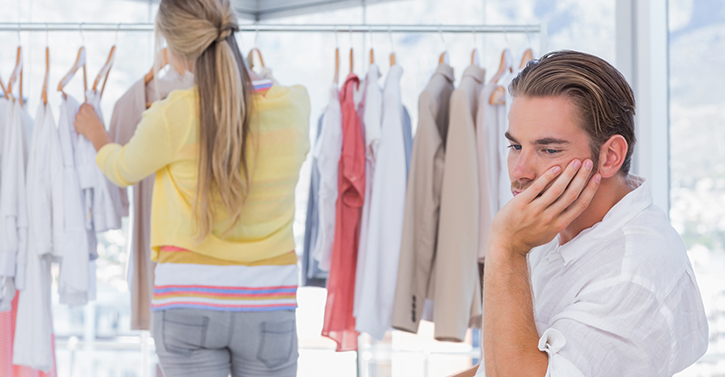The fact that women love to shop is no novelty. We enjoy browsing for clothes, trying out multiple outfits and we can tirelessly hop from one store to another with the aim of finding that perfect pair of stilettos. But what about men? Why do we always encounter half-asleep men, unamusingly sitting in the corner chair, hopping their feet while their significant other is trying their 15th pair of jeans?
Men and women indeed have different shopping behavior. Unfortunately, retailers have long-term been applying the same tactics for addressing both genders thus failing to distinguish discernible dissimilarities. In point of fact, if brands become acquainted with the latter, they could devise unique, gender- specific tactics which could generate increased engagement and procure higher ROI. On this wise, why are male and female shoppers so different?

Men hunt, women gather
Our shopping behavior has largely to do with primal instincts we inherited from our ancestors and reaching far back in history can help clarify some patterns. Back in the days, men and women had different roles as foragers: men primarily had the instinct of the hunter while women of the gatherer. Respectively, men looked for prey, hunted it, and brought it back.
Women, on the other side, gathered fruits and vegetables, foraged for the sweetest ones, selected the best, and brought it back home. Millennia later, we recognize this pattern in the behavior of shoppers: men walk into stores, get the basic clothing they need and leave the store. Women, conversely, ‘forage’ for the best possible outfit, try out different looks and spend hours comparing items which, from a male’sperspective, might look the same.
Get the job done!
Besides the primal instincts, men and women also have different motivations for shopping, once more leading to differences in shopping behavior. Intrinsically, men’s motives for shopping are more utilitarian as they buyclothing mainly to meet their needs, which helps clarify the shorter dwell time. However, rest assured that despite their brief shopping visits, men don’t always have a specific product in mind they would like to buy when entering the store. Adding to this that they are also more likely to buy impulsively and spend‘serious money’ on an unplanned purchase, retailers can indeed use this behavior to their advantage.
For instance, in-store product displays, on-site demonstrations and knowledgeable staff are factors that can persuade male shoppers to make the last step and buy a product. As men purely want to ‘get the job done’, it is moreover necessary to provide male shoppers with good reasoning of why they should buy the product, and why it actually makes sense to buy it. In itself, focusing on the demonstrated value, using active statements and getting to the point quickly are methods of engaging male shoppers. Men want to shop as quickly as possible and providing staff which will help them find the right items and get through the checkout quickly is indeed necessary. Some retailers go as far as purposely putting male items near the store entrance, to make them easier to locate.
It’s all about the feelings

But what about women? Female shoppers, however, display hedonistic motivations by showing attachment to emotional aspects in their shopping behavior and considering the convenience and recreation aspects as a very important part of their shopping activity. Women enjoy shopping and contrary to men, they see the activity as a way to relieve stress and relax. A good example of a store which efficiently addresses different gender needs through carefully thought design is Zappos.com. The male page has a clear layout and it focuses on the quality of the item, while the female one tries to sell emotions through wordplay.
As women want to build relationships with the brands, they want to feel confident they can trust the brand. To approach female shoppers, retailers should hence focus on creating an emotional shopping experience that will resonate. They should concentrate on storytelling, the brand, the lifestyle the brand is selling, and how the product will make women feel. The Dutch cosmetics and care brand Rituals is doing a good job by offering their shoppers the right care and reflecting their brand through the experience: from staff handing teacups to relaxing music and signature fragrances, they reflect the mission of making their customers feel good on a daily basis.
While shopping, women tend to be more comprehensive, search patiently for the right product and compare designs and brands. Hence, besides the experience, women are also interested in the expert advice of the staff and their ability to help them pick the right product. Since the lack of helpful staff is the top female complaint, employees should therefore be prepared to offer recommendations, choices, and advice to their female shoppers.
When looking at the shopping preferences from both genders, the saying that men come from Mars and Women from Venus is indeed applicable. For this reason, make sure to apply the aforementioned techniques and enforce the utilization of a gender-specific strategy, as this can generate a higher engagement whilst maximizing your retail productivity.
Are you curious to learn more? Through our integrated decision-making platform at StoreDNA, we help you deliver dramatically improved performance through better product assortments, store layouts, visual merchandising, and associate optimization. Learn more here.